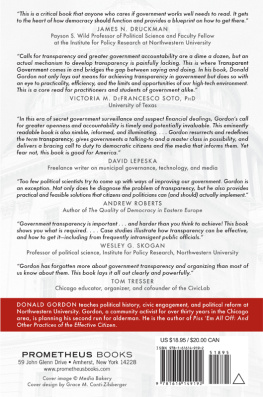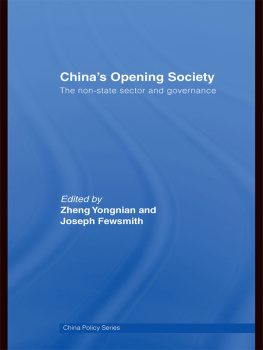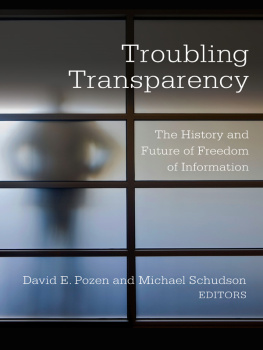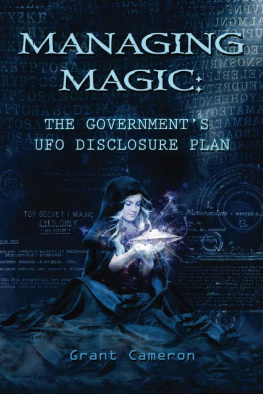Copyright 2015 by the President and Fellows of Harvard College
All rights reserved
Photograph by Ryan J. Lane/Getty Images
Design by Jill Breitbarth
978-0-674-74405-9 (hardcover)
978-0-674-91580-0 (EPUB)
978-0-674-91579-4 (MOBI)
The Library of Congress has cataloged the printed edition as follows:
Schudson, Michael.
The rise of the right to know : politics and the culture of transparency, 19451975 / Michael Schudson.
pages cm
Includes bibliographical references and index.
1. Freedom of informationUnited StatesHistory20th century. 2. Transparency in governmentUnited StatesHistory20th century. 3. Consumer protectionUnited StatesHistory20th century. 4. Environmental impact statementsUnited StatesHistory20th century. I. Title.
KF4774.S339 2015
342.73'066209045dc23
2015007935
Contents
- oneA Cultural Right to Know
- twoOrigins of the Freedom of Information Act
- threeThe Consumers Right to Be Informed
- fourOpening Up Congress
- fiveThe Medias Presence
- sixTo Let People Know in Time
- sevenTransparency in a Transformed Democracy
- eightDisclosure and Its Discontents
Thomas Jefferson once wrote that information is the currency of democracy, or so it is easy to learn online. Fortunately, it is just as easy to learn that he wrote no such thing. The people who run the website for Jeffersons home at Monticello cannot find that quotation anywhere in Jeffersons papers. And there is really no need to spend time searching. The American founders rarely spoke of democracy, and they labeled the American form of government not democratic but republican. They judged democracy to be unstable and undesirable. So we can feel confident that Jefferson never uttered nor wrote these words.
Not Thomas Jefferson but Ralph Nader declared information the currency of democracy. Information and its availability to the public at large became a theme for a wide variety of reforms and reformers in just the years that Nader came to national influence in the mid-1960s and into the 1970s.
Nader might well agreeJefferson surely would not havewith this assertion by two distinguished historians: It is a tenet of democracy that citizens should have full access to information so they can .
Earlier in North American history, there were many conditions under which subjects, later citizens, did not have full access to relevant information. It troubled the government of Virginia in 1682 that an upstart printed the laws of the colony without a license. He was punished, since printing was forbidden in Virginia until 1729, and from that point until 1765 the only printing press in Virginia was controlled by the governor. will show, did the people of the United States demand it until 1970. Only then did the U.S. House of Representatives make members votes on amendments to bills part of the public record. Only then did a reform coalition in the House sponsor a set of anti-secrecy measures that ushered in a major increase in the public visibility of legislative action.
Somehow we have collectively backdated ideas and innovations of the past half century to the countrys founding era. I hope to help set this record right.
What I will ponder in this book is not why forms of secrecy endured so long but why they changed when they did. How did information disclosure or transparency come to be identified with self-government, being informed with good citizenship, and openness with both public and private virtue? This is not to suggest that Americans today have full access to government information, or that they should, but only to note that there are now laws on the books, practices in executive agencies, a culture in newsrooms, a presupposition in many nonprofit watchdog organizations, and public expectations that give body to an ideal that honesty is (usually) the best policy and that the people have or should have a right to know.
In a rich essay on the cultural changes of the 1960s as a religious awakening akin to earlier moments of religious revitalization in U.S. history, Hugh Heclo summarizes his argument as follows: The Awakening of the Sixties was transformative, for better or worse. It created an unprecedented openness of institutions to critical public view and correction. It established a presumption for an inclusive social union of equals beyond anything ever attempted by a nation-state. It nationalized policy-making on issues touching virtually every
Most historians would readily agree that the 1960s were a cultural and political watershed, but to focus on openness as one of its key featuresin fact, the first characteristic Heclo mentionsis unusual. It is also unusual, amid a general celebration of transparency, particularly concerning government information, to discuss it with the ambivalence of Heclos for better or worse remark. Transparency today seems to be a motherhood-and-apple-pie value. It often links supporters from the left with the libertarian right, and sometimes with moderate and conservative Republicans, too. Various nongovernmental organizations march behind the banner of transparency. Taxpayers for Common Sense (founded 1995) has compiled the most comprehensive database on congressional earmarking; the groups datapublicly availableserve as a starting point for Washington reporters who cover the earmarks. This organizations agenda of keeping a close watch on government spending is usually associated with conservatives, but the group insists on its nonpartisanship and on its commitment to transparency as a fundamental democratic value. Similarly, the Sunlight Foundation (founded in 2006) also provides publicly available databases, but these are focused on the dangers of money influencing and corrupting the legislative process, a theme usually sounded by liberals. For instance, Sunlight teamed up with ProPublica, a leading investigative journalism nonprofit, to create a downloadable database of federal filings for registered foreign lobbyists.
Right, left, and center, there is broad support for the ideal of transparency. At the same time, there are limits to the value of openness. Full transparency in government, in professional-client relations, and in personal life can do great harm. It threatens privacy. It threatens relations of intimacy that invariably are built on closely held confidences. In government or other decision-making groups it inhibits honest conversation. It may expose vulnerable individuals or groups to intimidation by powerful and potentially malevolent authorities.
My mission in this book is not to show that disclosure is good or bad, nor is it to explore what conditions might make secrecy, not transparency, the morally better choice. My aim is to show that openness was a key element in the transformation of politics, society, and culture from the late 1950s through the 1970s. I want to bring this topic close to the center of how we understand the social and political transformations of that era. I believe this is important because I think that American politics and society in this era became more fully democratic than they were before, and that for all the hazards and shortcomings of transparency, its expansion has made our politics more worthy of the name democracy.







